
Royal Botanic Gardens, Kew is a non-departmental public body in the United Kingdom sponsored by the Department for Environment, Food and Rural Affairs. An internationally important botanical research and education institution, it employs 1,100 staff. Its board of trustees is chaired by Dame Amelia Fawcett.
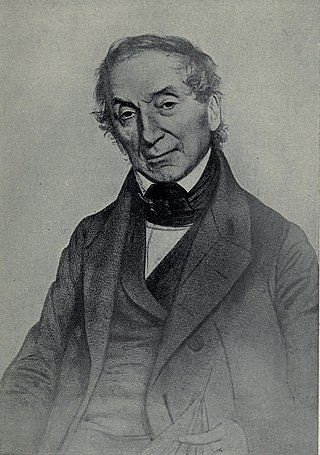
Nathaniel Wolff Wallich was a surgeon and botanist of Danish origin who worked in India, initially in the Danish settlement near Calcutta and later for the Danish East India Company and the British East India Company. He was involved in the early development of the Calcutta Botanical Garden, describing many new plant species and developing a large herbarium collection which was distributed to collections in Europe. Several of the plants that he collected were named after him.

Mucuna is a genus of around 114 accepted species of climbing lianas (vines) and shrubs of the family Fabaceae: tribe Phaseoleae, typically found in tropical and subtropical forests in the Americas, sub-Saharan Africa, southern, southeastern, and eastern Asia, New Guinea, Australia, and the Pacific Islands.

Strongylodon macrobotrys, commonly known as the jade vine, emerald vine, or turquoise jade vine, is a leguminous vine endemic to the Philippines. It is a popular ornamental plant known for its cascading clusters of vibrant turquoise or greenish-blue claw-shaped flowers. Cultivating jade vine requires a tropical environment, making it a popular choice in botanical gardens and conservatories. The plant's striking appearance and limited distribution contribute to its allure among plant enthusiasts worldwide.
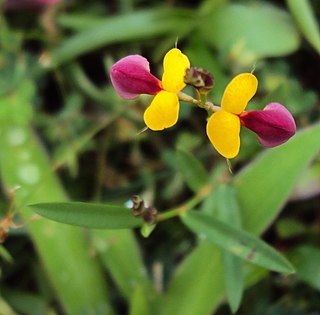
Alysicarpus is a genus of flowering plants in the legume family, Fabaceae. It is distributed in tropical and subtropical regions of Africa, Asia, and Australia. Species are known generally as moneyworts. Unusually for legumes, the leaves are simple.

Trithuria is a genus of small ephemeral aquatic herb that represent the only members of the family Hydatellaceae found in India, Australia, and New Zealand. Almost all described species of Trithuria are found in Australia, with the exception of T. inconspicua and T. konkanensis, from New Zealand and India respectively. Until DNA sequence data and a reinterpretation of morphology proved otherwise, these plants were believed to be monocots related to the grasses (Poaceae). They are unique in being the only plants besides two members of Triuridaceae in which the stamens are centred and surrounded by the pistils; in Hydatellaceae the resulting 'flowers' may instead represent condensed inflorescences or non-flowers.
Silentvalleya is a genus of Indian plants in the grass family.

Glyphochloa is a genus of Indian plants in the grass family.
Hubbardia is a genus in the grass family that is endemic to India. It is the only genus in the tribe Hubbardieae of the subfamily Micrairoideae.
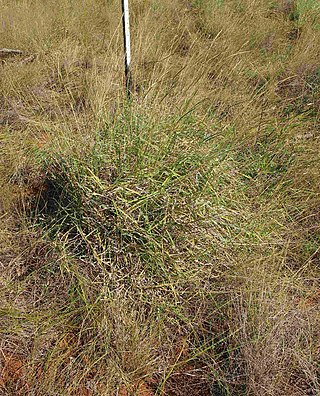
Mnesithea, or jointtail grass, is a genus of Asian, Australian, and Pacific Island plants in the grass family. The number of species placed in the genus varied considerably as of November 2024 depending in large part on how the genus Coelorachis was treated. Sources that synonymized Coelorachis with Mnesithea accepted about 26 species. Those that synonymized Coelorachis with Rottboellia accepted about seven.

Boucerosia frerei is a plant in the genus Boucerosia which contains several species many of which are native to the Indian subcontinent and one species, Boucerosia crenulata, native to Myanmar. B. frerei, is a small succulent endemic to the forest area in the Western Ghats and Deccan plateau in Maharashtra state in India. It is also grown as a greenhouse plant by succulent plant enthusiasts. At one time, it was on the IUCN list of twelve most endangered species on earth, but conservation efforts have brought it back from the brink of extinction.
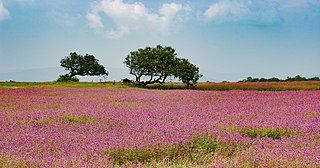
The Kas Plateau Reserved Forest, also known as the Kaas Pathar, is a plateau situated 25 kilometres west from Satara city in Maharashtra, India. It falls under the Sahyadri Sub Cluster of the Western Ghats, and it became a part of a UNESCO World Natural Heritage Site in 2012.
Eriocaulon bolei is a critically endangered monocotyledonous plant only recorded in Satara district in the state of Maharashtra, India. It is a herb which grows up to 10–20 cm in height and seen in running water.
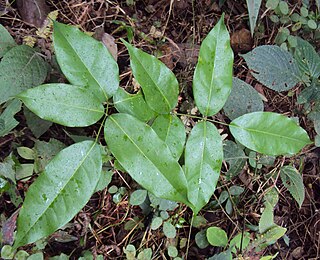
Rourea minor is a large scandent shrub from the family Connaraceae. It has been recorded from Africa, tropical Asia and the Pacific.

Mucuna monosperma, commonly known as negro beans in India, or deer-eye beans, donkey-eye beans, or ox-eye beans, is a large woody climber from the family Fabaceae. The plant has three layers; a brown pod covered in small hairs, curved petals usually colored purple and black round-shaped beans. Small hairs on the pod can irritate the skin.The petals of the Muncuna monnosperma flower opens at night and closes in the morning. It is found in India, including the eastern Himalayas, the northeastern states, and the Andaman and Nicobar Islands, Sri Lanka, Bangladesh, Myanmar, and Thailand. Its natural habitat is evergreen forests, and it commonly grows near swamps or along streams.

Mucuna gigantea, commonly known as burny bean, burney bean, velvet bean or sea bean is a species of liana from the legume family Fabaceae. Its natural range roughly follows the perimeter of the Indian Ocean and includes Africa, India, Malesia, New Guinea and northern Australia. Many parts of the plant - in particular the new growth, flowers and fruit - are covered in fine irritant hairs.

Mucuna urens is a species of large liana from the family Fabaceae. The plant is native to tropical Central and South America, and has been introduced into the Republic of the Congo. Common names include horse-eye bean and ox-eye bean.
Mucuna paniculata is a species of flowering, woody vine in the family Fabaceae, the bean family. It is native to northern Madagascar where it is locally known in Malagasy as vohinkovika. It flowers between June and August.

Searsia mysorensis is a species of shrub with thorny branches. It is commonly known as Mysore sumac or Indian sumac.

Trithuria konkanensis is a species of aquatic plant in the family Hydatellaceae endemic to India.















